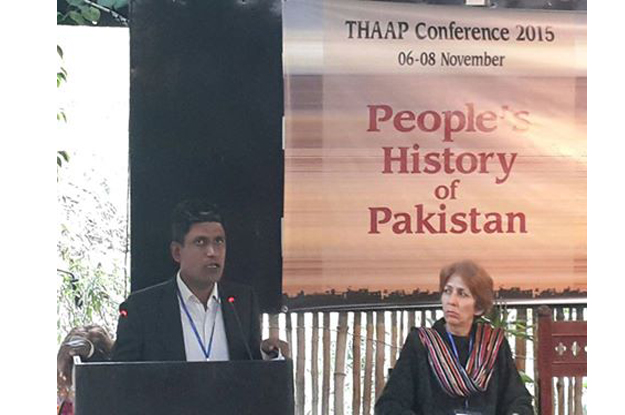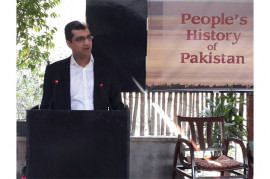
The first paper was presented by Prof Dr Anwar Shaheen and Sajjad Zaheer. It was titled: Migration among the Hindus of Sindh in Historical Context. “A large number of them [Hindus] live away from cities. Despite hardships, they do not want to move away from ancestral land,” they said.
“They have been living there for 5,000 years. They consider themselves the sons of the soil. Many say the land is like their mother. They cannot leave it,” said Anwar Shaheen.
The second paper was presented by Dr Humera Naz, a University of Karachi Department of History assistant professor. She said she had studied the position of women in society through Sindhi folklore. “Folklore is an important part of the oral tradition, often recording generally accepted norms in society,” she said.
She said Marri in the Umar-Marvi story was a symbol of love, freedom and chastity. “Her refusal to give in to Umar despite the wealth he promised her showed her strength of character,” she said. She said the character was also celebrated for her honesty.
“From this and other stories, we can conclude that during olden times women had a certain degree of independence to make their decisions. This was especially true for women of the upper class. They could act as regents, attended court and were involved in politics,” she said.
She said that polygamy was also a norm and extra marital affairs were common for men. “They were not unheard of for women in these stories,” she said.
The final paper for the session was presented by Dr Khataumal Lohano, a graduate from Sindh University. It was titled: Life of the Meek: Shall they Inherit the Earth? He said there was a disconnect between the wealthy living in cities and those that lived in rural Sindh. “These people often complete their studies and go abroad, but even if they do live here, their lives are disconnected from the masses,” he said.
In his paper, he discussed the lives of one upper class Muslim and two lower class Hindus living in rural Sindh. He talked about the impact that climate change was having on their lives.
In the case of the upper class Muslim, he said, his family owned 500 goats. “Over the years, their fortunes dwindled.
The man is now ostracised by his family. They prefer to interact with those who hold white collar jobs,” he said.
Published in The Express Tribune, November 8th, 2015.


















1713904359-0/burn-(1)1713904359-0-270x192.webp)










1713853507-0/MalalaHilary-(2)1713853507-0-270x192.webp)







COMMENTS
Comments are moderated and generally will be posted if they are on-topic and not abusive.
For more information, please see our Comments FAQ